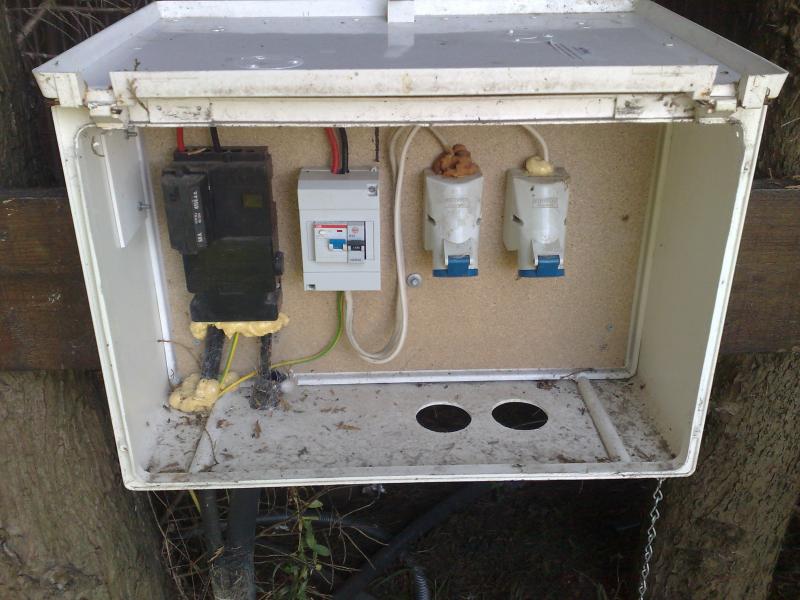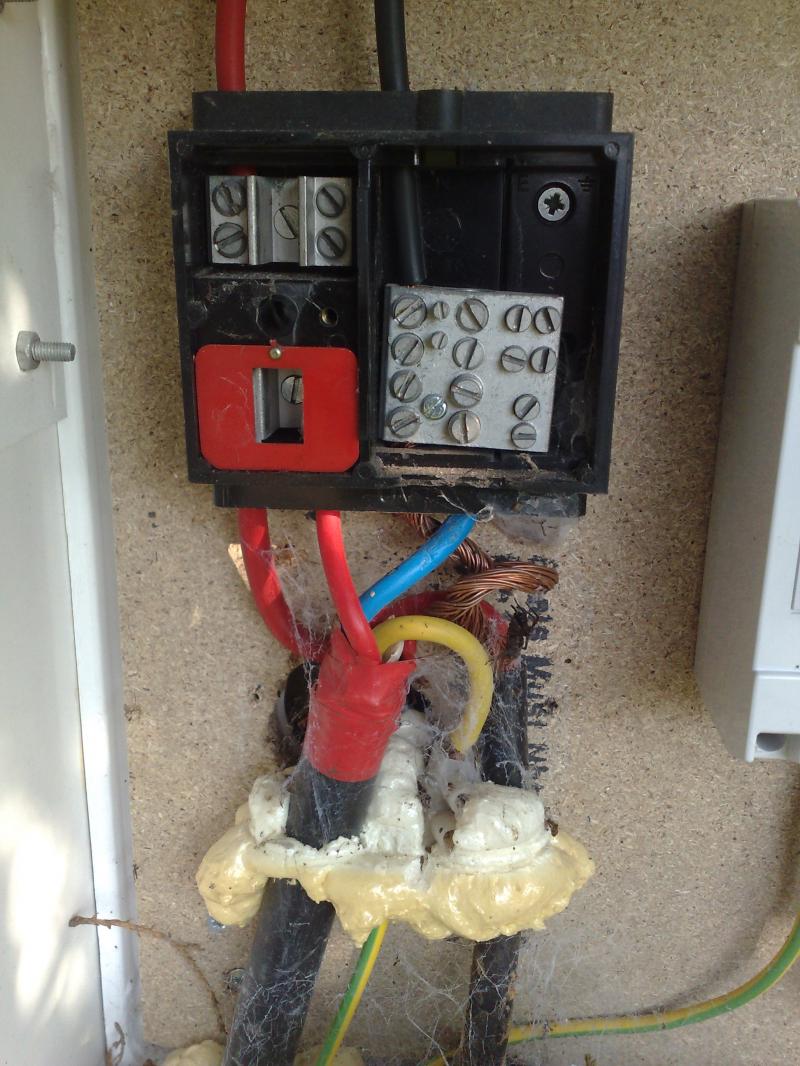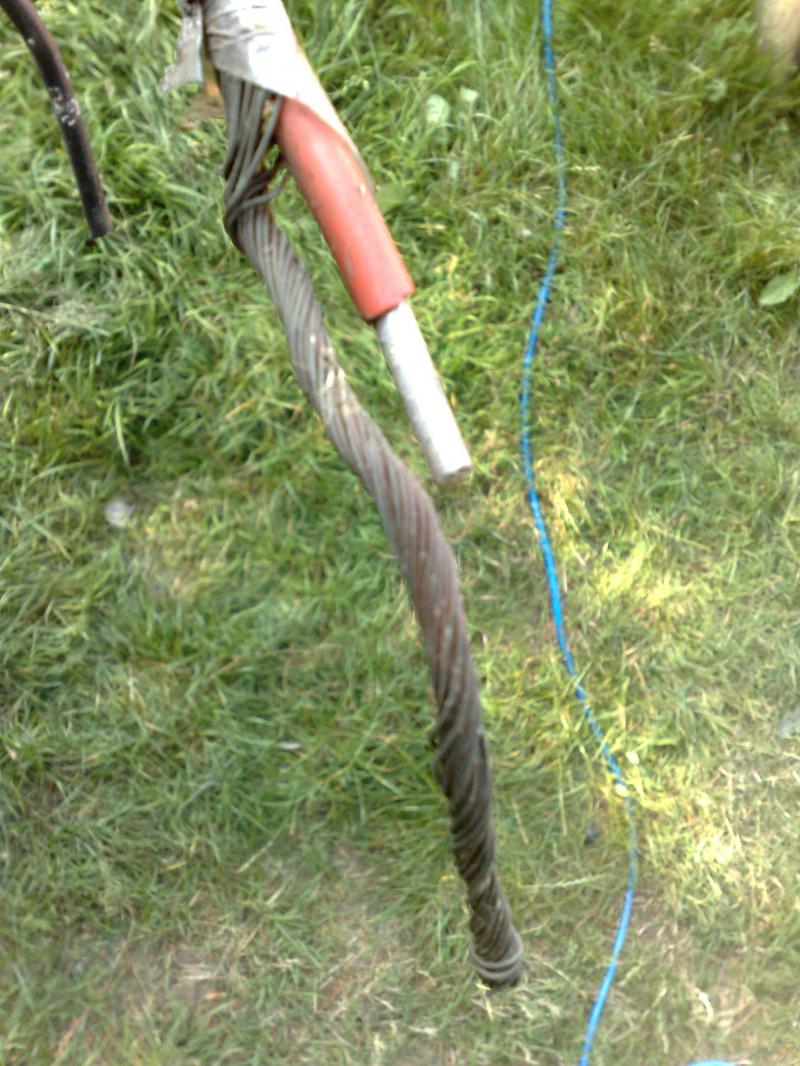Continuing my ongoing PIR of a farm complex with various functions - today's fun was a small caravan site (5 pitches). Some issues came up and I thought someone on here might find it interesting.
All looked reasonably ok, until I started testing and investigating.
To be fair, there was nothing that was going to burn down the place imminently (compared to some installs I've seen!) but this is one of the pitch installs:
So far so 'neat'
one of the other pitches (I removed the cover)
Seems the installer was a retired DNO guy - wonder how much stuff he stockpiled in his garage over the years
That probably explains what I then found...
The cutout at the first pitch :
shows the incoming SWA, fed from a barn maybe 100m away
This was protected at source by a 63A cartridge fuse and a 100ma (non time delayed) RCD.
Despite everything being TT, they exported the earth to the first pitch, but then installed an earth rod beside each pitch (no protection apart from being well hidden in the undergrowth)
The links from the first cut out are all then run in straight concentric cable, a sample of which I found lurking in the grass:
Something else that walked from the work van I presume....
Unfortunately, at that point he seemingly lost the plot, as the cut out in pitch 2's box separately fed separately the cut outs in pitch 3 & 5 and the CU in pitch 4. Pitch 2 CU was fed from the intake of the cut out in its box, so bypassed it entirely.
Hence Pitch 3 was fused in order: 63A , 100A , 63A (All BS88 or 1361)
While Pitch 5 had 63A, 100A, 100A
Clearly the installer misunderstood the anti-discrimination laws
My view would be that the cut outs are not necessary and could be replaced with henley blocks - the cable has overcurrent and RCD protection at source after all. At the very least the discrimination will have to be sorted and the isolation implications made clear.
All I have to do now is work out which faults should be code 2 and which can be left as code 4....
I believe that the straight concentric doesn't comply with 7671 due to unsheathed neutral, but in short runs between pitches (partly underground in plastic conduit and out of easy access) would it be considered dangerous? My initial thought would be code 4.
Obviously there are serious discrimination issues and I would veer slightly towards code 2 for the cut out issues, but not sure about the rcd discrimination (should be time delayed at source) - code 4 I would say, because the issue is more one of annoyance having to traipse 100m to reset the rcd rather than presenting a danger.
7671 states IPx4 (splashes) for electrical equipment in caravan sites, but doesn't make clear whether the enclosure would make it compliant or not - the CU clearly isn't.
It also requires IP3x which a couple of the CU don't meet, so another code 2 imo.
There are numerous other faults that will be going down as code 4s, but anyone spot the other code 2 I will noting?
It's not that 7671 requires each socket to have its own isolation, as I will note that as a code 4.
Any views from those with more experience of caravan installs welcome.
Gavin
All looked reasonably ok, until I started testing and investigating.
To be fair, there was nothing that was going to burn down the place imminently (compared to some installs I've seen!) but this is one of the pitch installs:
So far so 'neat'
one of the other pitches (I removed the cover)
Seems the installer was a retired DNO guy - wonder how much stuff he stockpiled in his garage over the years
That probably explains what I then found...
The cutout at the first pitch :
shows the incoming SWA, fed from a barn maybe 100m away
This was protected at source by a 63A cartridge fuse and a 100ma (non time delayed) RCD.
Despite everything being TT, they exported the earth to the first pitch, but then installed an earth rod beside each pitch (no protection apart from being well hidden in the undergrowth)
The links from the first cut out are all then run in straight concentric cable, a sample of which I found lurking in the grass:
Something else that walked from the work van I presume....
Unfortunately, at that point he seemingly lost the plot, as the cut out in pitch 2's box separately fed separately the cut outs in pitch 3 & 5 and the CU in pitch 4. Pitch 2 CU was fed from the intake of the cut out in its box, so bypassed it entirely.
Hence Pitch 3 was fused in order: 63A , 100A , 63A (All BS88 or 1361)
While Pitch 5 had 63A, 100A, 100A
Clearly the installer misunderstood the anti-discrimination laws
My view would be that the cut outs are not necessary and could be replaced with henley blocks - the cable has overcurrent and RCD protection at source after all. At the very least the discrimination will have to be sorted and the isolation implications made clear.
All I have to do now is work out which faults should be code 2 and which can be left as code 4....
I believe that the straight concentric doesn't comply with 7671 due to unsheathed neutral, but in short runs between pitches (partly underground in plastic conduit and out of easy access) would it be considered dangerous? My initial thought would be code 4.
Obviously there are serious discrimination issues and I would veer slightly towards code 2 for the cut out issues, but not sure about the rcd discrimination (should be time delayed at source) - code 4 I would say, because the issue is more one of annoyance having to traipse 100m to reset the rcd rather than presenting a danger.
7671 states IPx4 (splashes) for electrical equipment in caravan sites, but doesn't make clear whether the enclosure would make it compliant or not - the CU clearly isn't.
It also requires IP3x which a couple of the CU don't meet, so another code 2 imo.
There are numerous other faults that will be going down as code 4s, but anyone spot the other code 2 I will noting?
It's not that 7671 requires each socket to have its own isolation, as I will note that as a code 4.
Any views from those with more experience of caravan installs welcome.
Gavin






